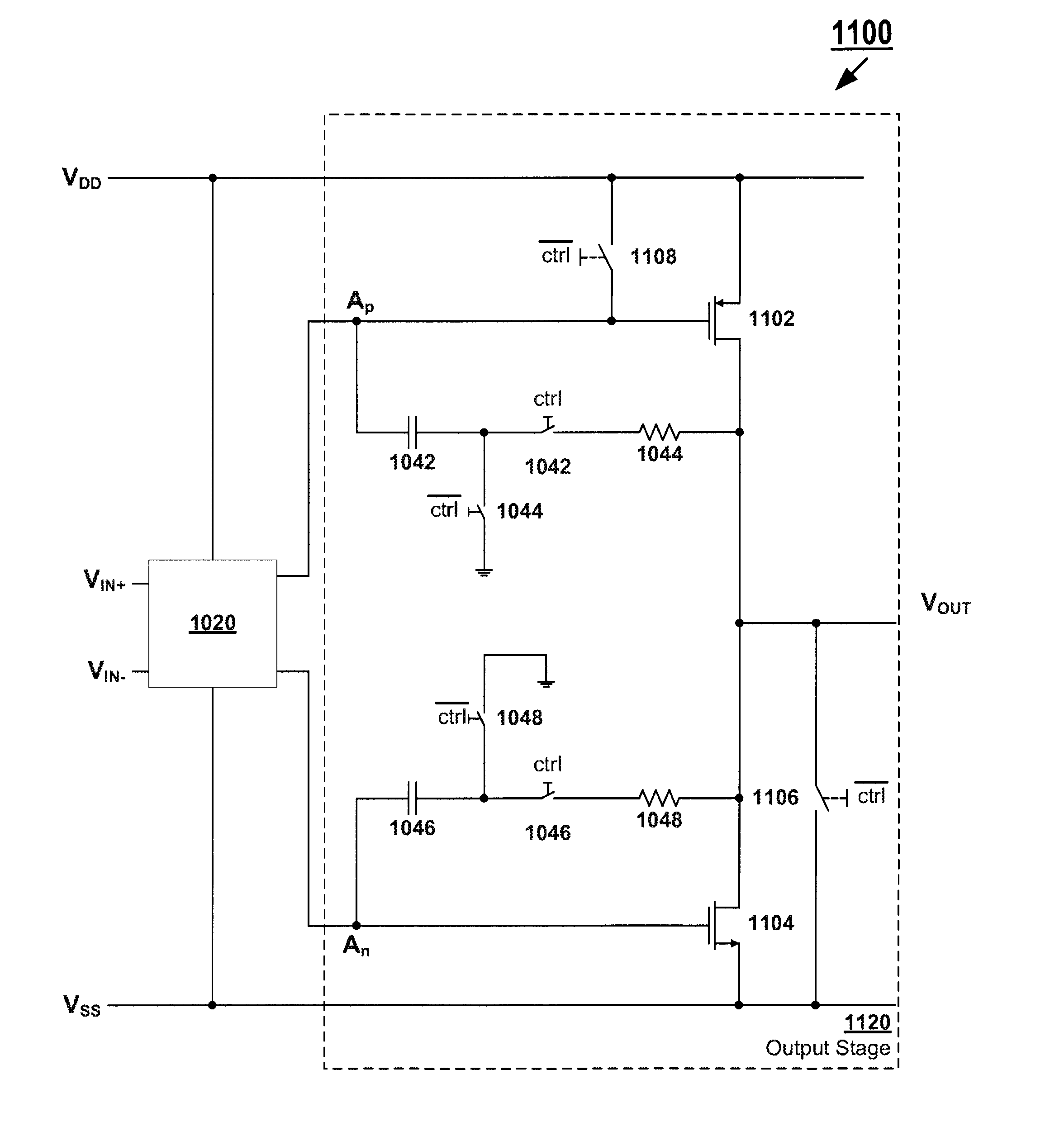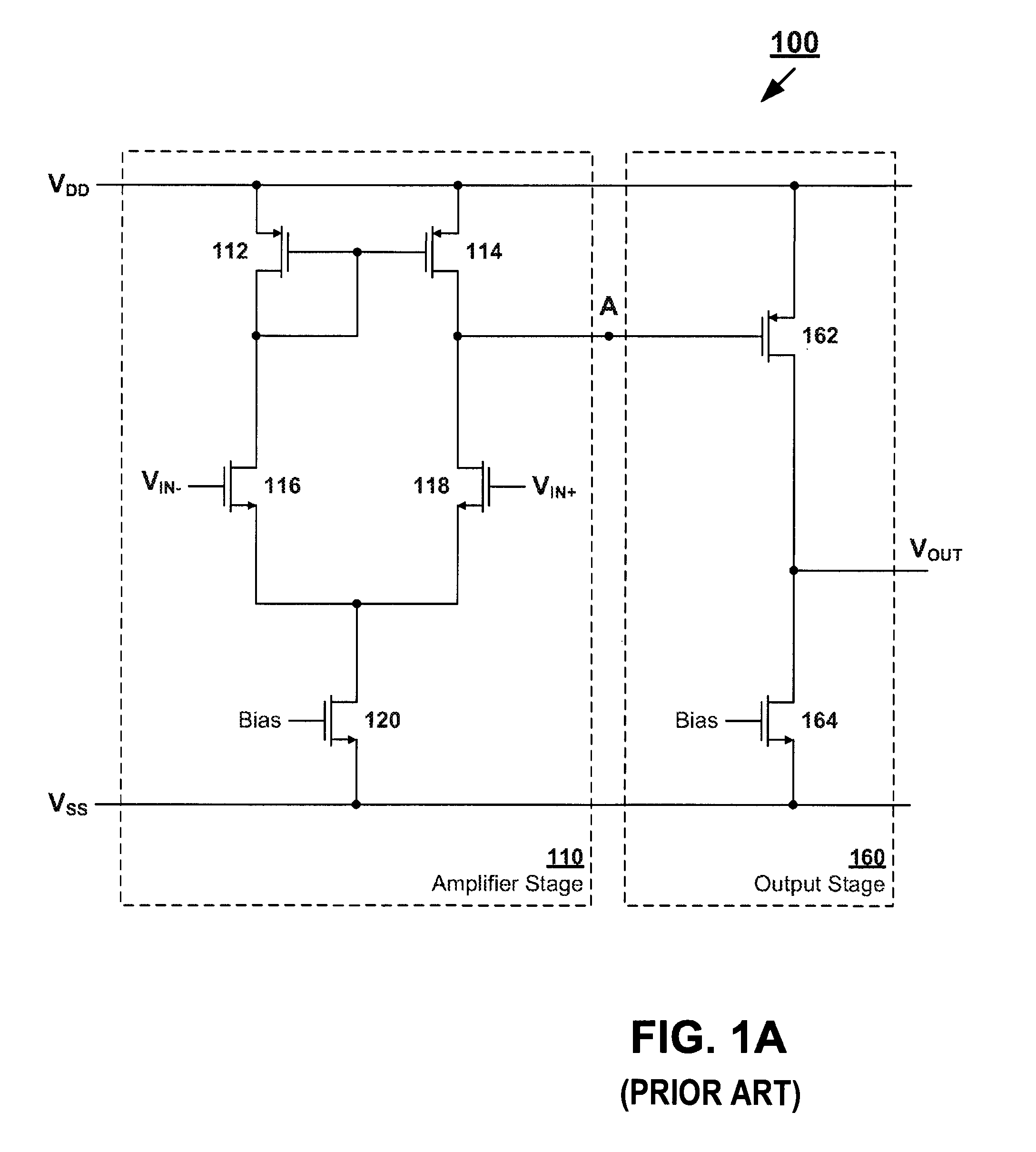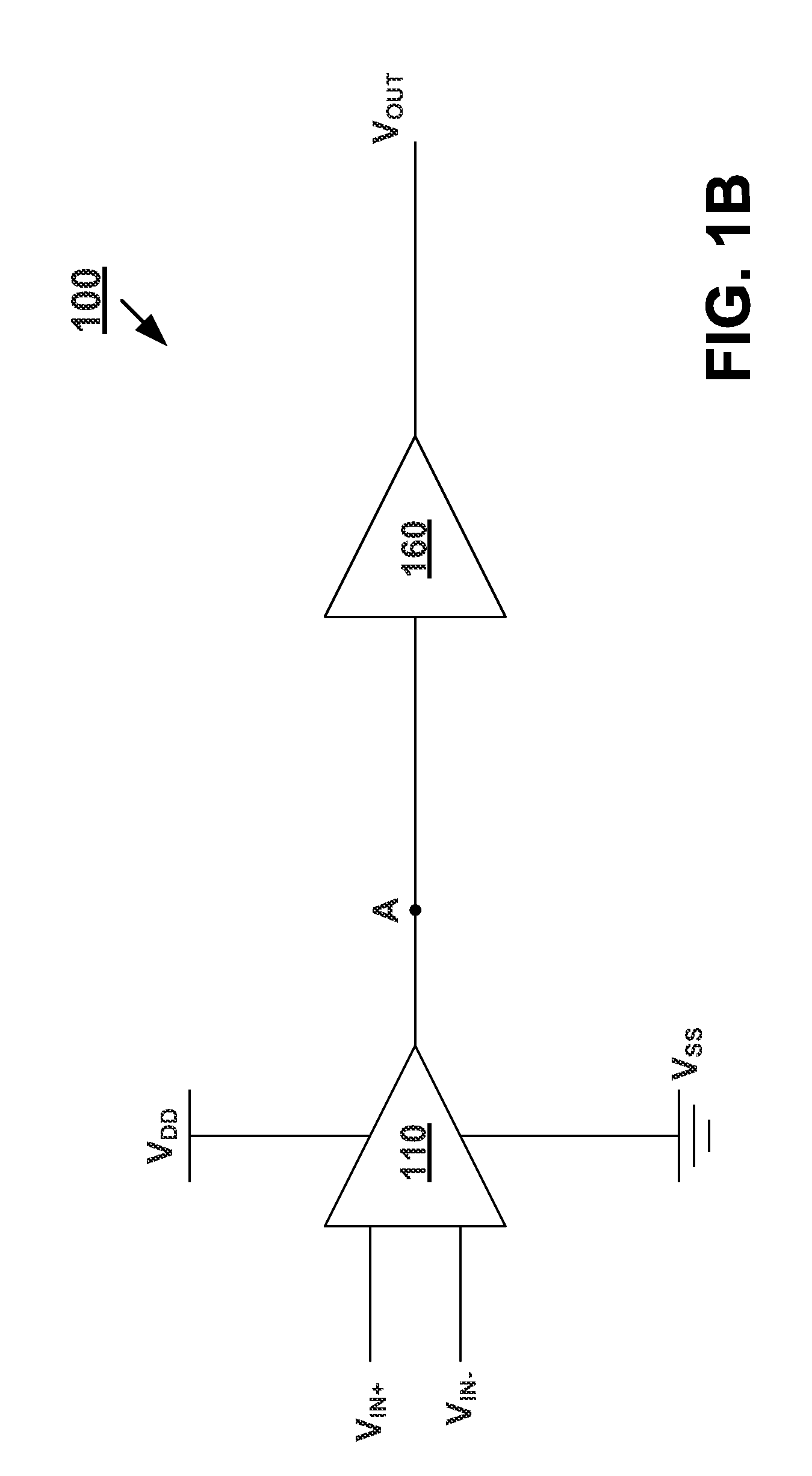Anti-pop circuit
a technology of anti-pop circuits and amplifiers, applied in the direction of push-pull amplifiers, phase splitters, gain control, etc., can solve the problems of pop, voltage to be seen at the output, and the problem of particularly pronounced problems
- Summary
- Abstract
- Description
- Claims
- Application Information
AI Technical Summary
Benefits of technology
Problems solved by technology
Method used
Image
Examples
Embodiment Construction
[0037]FIG. 4 illustrates an amplifier equipped with an anti-pop circuit which can be implemented with simple switches. Amplifier 400 is similar to amplifier 200. Amplifier 400 comprises amplifier stage 110 and output stage 420. Like output stage 220 of amplifier 200, output stage 420 comprises core output stage 160 and a compensation network comprising capacitor 202 and resistor 204. The described components function essentially the same as that described for amplifier 200. However, output stage 420 further comprises switch 402. When closed switch 402, it drags the output voltage VOUT to VSS which is shown as ground in FIG. 4. It should be noted that often VSS is fixed to ground. However, for the purposes of this disclosure ground and VSS are used interchangeably and should be construed to be the low power rail and not necessarily a zero voltage.
[0038]Switch 402 is controlled by a control signal. Therefore the switch initially is closed when the control signal is low but the switch ...
PUM
 Login to View More
Login to View More Abstract
Description
Claims
Application Information
 Login to View More
Login to View More - R&D
- Intellectual Property
- Life Sciences
- Materials
- Tech Scout
- Unparalleled Data Quality
- Higher Quality Content
- 60% Fewer Hallucinations
Browse by: Latest US Patents, China's latest patents, Technical Efficacy Thesaurus, Application Domain, Technology Topic, Popular Technical Reports.
© 2025 PatSnap. All rights reserved.Legal|Privacy policy|Modern Slavery Act Transparency Statement|Sitemap|About US| Contact US: help@patsnap.com



